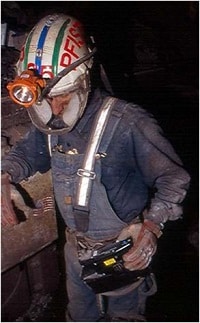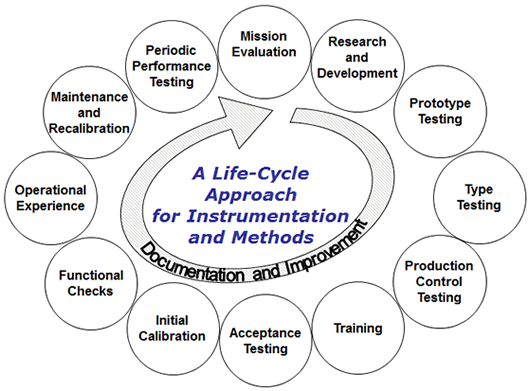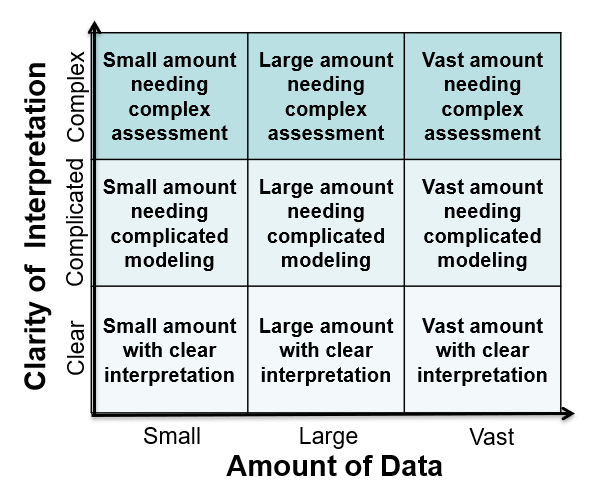Direct Reading and Sensor Technologies

Overview
Direct-reading methodologies and sensors are being used more and more frequently for health and safety in many workplaces: from mining to oil and gas; from manufacturing to construction. Both direct-reading methodologies and sensors are useful to detect and monitor hazardous conditions, to assess and document intervention strategies, and especially to immediately trigger alarms in the event of unsafe conditions. Generally, these technologies can provide timely information to users and, in the case of sensors and real-time monitors, additional valuable data within the monitoring session as opposed to traditional time-delayed monitoring methods.
The use of sensors to improve safety and health has increased exponentially as countless remote wireless systems are now employed for monitoring the environment, work sites, disaster response, “smart” buildings and facilities. Wireless data transfer based on cell phone networks and smart phone technology is enhancing the adoption of these sensors and allowing integration of geographically disperse sensors to produce comprehensive exposure maps. Wearable and even implantable sensors are being developed that will aid in exposure assessment and clinical practice.
In November 2008, NIOSH hosted the Direct Reading Exposure Assessment Methods (DREAM) Workshop (reference DHHS (NIOSH) Publication Number 2009-133), which gathered stakeholder input from academia, labor, management, developers, governmental agencies, and manufacturers on the research needs in the area of direct-reading methods for assessing occupational exposures. The event, which entailed collaborations of the 12 cosponsors and over 175 participants, was the first step in the creation of structured entity in NIOSH focused on Direct Reading methodologies.
The NIOSH Center for Direct Reading and Sensor Technologies (NCDRST) was established in May 2014 to coordinate research and to develop recommendations on the use of 21st century technologies in occupational safety and health. The NCDRST is a virtual center hosted by the NIOSH Health Effects Laboratory Division and the NIOSH Exposure Assessment Core and Specialty Program. The NIOSH Center has also consolidated activities in the NIOSH Mining program, the NIOSH Oil and Gas program, the National Occupational Research Agenda Manufacturing Sector Council, the NIOSH Center for Motor Vehicle Safety, NIOSH Center for Work and Fatigue Research, and the NIOSH Total Worker Health program.
The objective of the NIOSH Center for Direct Reading and Sensor Technologies is to coordinate a national research agenda for direct-reading methods and sensor technologies. Research on these technologies has been incorporated into the goals of the NIOSH Strategic Plan for fiscal years 2019-2023. Specifically:
- To develop guidance documents pertinent to direct-reading methods and sensors, including validation and performance characteristics;
- To develop training protocols; and
- To establish partnerships to collaborate in the Center’s activities.
Direct Reading and Sensor Technologies Life Cycle Approach
The following lifecycle approach for the development and application of direct-reading and sensor technologies shows key steps that are taken to ensure the relevance and reliability of measurements to protect workers. The cycle begins with a clear and complete identification of what needs to be measured, under what conditions it needs to be measured, and how well it needs to be measured. It also guides research and development, prototype testing, type testing, production control testing, and training needed to develop the instrument. The life cycle approach defines procedures for acceptance testing, initial calibration, functional checks, conduct and evaluation of operational experience, maintenance and recalibration, and periodic performance testing to confirm continued successful use of the instrument. Effective prototype testing ensures that the final instrument will work as intended under realistic conditions. Documentation and continuous improvement are essential at each step.

Right Sensors Used Right initiative
The Center for Direct Reading and Sensor Technologies has an active initiative called Right Sensors Used Right. The initiative intends to investigate, disseminate, and provide guidance for the selection and use of direct-reading and sensors technologies for health and safety environments. The objective is to promote the competent development, adoption, and interpretation of real-time monitors and direct-reading methodologies. Encouraging involved individuals to consider the capabilities and limitations of a technology can improve the ability to address modern measurement challenges.
Currently, the NIOSH Right Sensors Used Right initiative focuses on real-time respirable dust monitors and personal multi gas-monitors, but it can be applied to any real-time monitor and direct-reading method. The NIOSH Center for Direct Reading and Sensor Technologies will continue working on the Right Sensors Used Right approach by leading and participating in activities, disseminating specific outputs, and creating tools for the competent selection and adoption of real-time monitors and direct-reading methodologies.
The collection of data and big data, its categorization and management, and the development of a graded informatics approach are also important concepts related to right selection and adoption of sensors for workers protection.

Examples of NIOSH-Developed Sensor Technologies
NIOSH researchers have developed several direct-reading methods and real-time monitors and they are constantly exploring new ways to use these technologies to improve occupational safety and health. A few examples include technologies developed for mining environments to monitor respirable dust, the continuous personal dust monitor and the Helmet-CAM approach and complementary EVADE software, crystalline silica with the field-based RCS monitoring approach and the FAST software and the proximity detection sensors to address the co-presence of workers and machines in confined spaces.
Monitoring ultrafine aerosols and their chemical composition in real-time using portable handheld instruments is now possible using Aerosol Mobility Spectrometers and Quantum Cascade Laser-IR & Raman analyzers. Sensor arrays, like the Portable Electronic Nose Sampler (MSEM) can allow visualization of different dimensions using modeling and training techniques.
Direct reading surface-wipe and field detection technologies have been developed to detect and measure illicit drugs such as methamphetamine and opioids, and anticancer drugs in clinical settings. These and other point-of-use wipe methods fill a need identified by police, fire fighters, first responders, emergency responders, industrial hygienists and health care personnel for real-time surface detection of hazardous chemicals.
NIOSH has also developed two smartphone applications that use sensors. The first, the Sound Level Meter App, is a tool to measure sound levels in the workplace. It also provides noise exposure parameters to help reduce occupational noise-induced hearing loss. The second, the Ladder Safety App, helps users set their extension ladder at the proper angle, among other features. Ladders are one of the leading causes of falls.
Collaboration and resources
Wearable Sensors: An Ethical Framework for Decision-Making
As wearable sensors become more commonplace and useful for monitoring employee safety and health, values conflicts and ethical dilemmas arise that need to be addressed. This NIOSH Science Blog Post proposes an ethical framework that can be used as a decision-making tool.
Exposure Assessment Cross-Sector Program
Describes the field of exposure assessment. This program provides coordination for NIOSH efforts that identify and characterize workplace exposures, develop estimates of exposure for exposure-response and risk assessment studies, and evaluate the significance of exposure and effectiveness of intervention strategies.
Components for Evaluation of Direct-Reading Monitors for Gases and Vapors
DHHS (NIOSH) Publication Number 2012-162
Expands the historical NIOSH methods for monitor development and evaluation testing to include performance characteristics, a summary of recommended tests to evaluate the monitors, and approximations for estimating accuracy.
Addendum to Components for Evaluation of Direct-Reading Monitors for Gases and Vapors: Hazard Detection in First Responder Environments
DHHS (NIOSH) Publication Number 2012-163
Expands the applicability of the Components document by presenting methods to be used in evaluating direct-reading monitors for hazard detection in First Responder environments, including those related to incidents involving weapons of mass destruction (WMD).
NIOSH Program Performance One-Pager.
NIOSHTIC 2 Database Search
This link provides the results of a search of the NIOSHTIC-2 database for citations and abstracts of NIOSH documents related to direct-reading and sensor technology
Information and Contact
NIOSH invites your participation in any aspect related to direct-reading methodologies and real-time monitors to improve the health of workers and the public.
Please contact the NCDRST at sensors@cdc.gov
